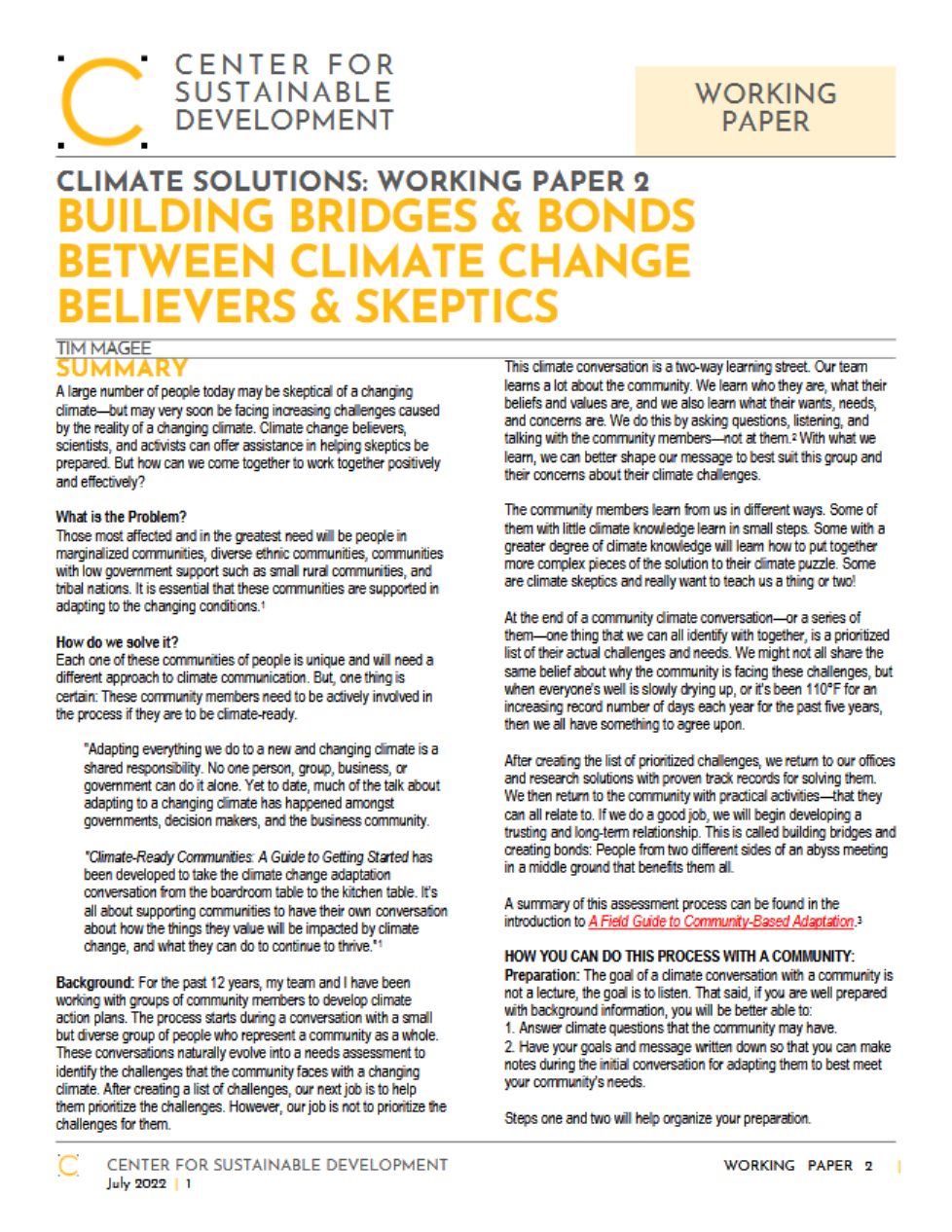Training for Individuals, Communities,
Nonprofits, & Local Governments
Become Adaptable and Resilient
Get road-tested, affordable, do-it-yourself solutions for a changing climate that YOU can launch NOW!
Start today with ‘8 Steps: Cut Your Carbon Footprint 50%.’
How Can You Prevent Climate Change?
Step 1: Have a Climate Conversation.
It’s easy and it’s fun!
Create your message to best fit community perception, needs & values.
A large number of people today may be skeptical of a changing climate—but may very soon be facing increasing challenges caused by the reality of a changing climate. Climate change believers, scientists, and activists can offer assistance in helping skeptics be prepared. But how can we come together to work together positively and effectively?
Those most affected and in the greatest need will be people in marginalized communities, diverse ethnic communities, communities with low government support such as small rural communities, and tribal nations. It is essential that these communities are supported in adapting to the changing conditions.1
Each one of these communities of people is unique and will need a different approach to climate communication. But, one thing is certain: These community members need to be actively involved in the process if they are to be climate-ready.
“Adapting everything we do to a new and changing climate is a shared responsibility. No one person, group, business, or government can do it alone. Yet to date, much of the talk about adapting to a changing climate has happened amongst governments, decision makers, and the business community.
“Climate-Ready Communities: A Guide to Getting Started has been developed to take the climate change adaptation conversation from the boardroom table to the kitchen table. It’s all about supporting communities to have their own conversation about how the things they value will be impacted by climate change, and what they can do to continue to thrive.”1

Write Indigenous Climate Action Plans
8 Week Class
Hands On

How to Write a Climate Action Plan
8 Week Class
Hands On

Fund Your Climate Action Plan
8 Week Class
Hands On

Launch Your Climate Action Plan
8 Week Class
Hands On
Building Meaningful Bridges & Bonds Between Climate Change Believers & Skeptics.

Join 15,000 individuals, and members of nonprofits and local governments: Subscribe to
Climate Solutions.